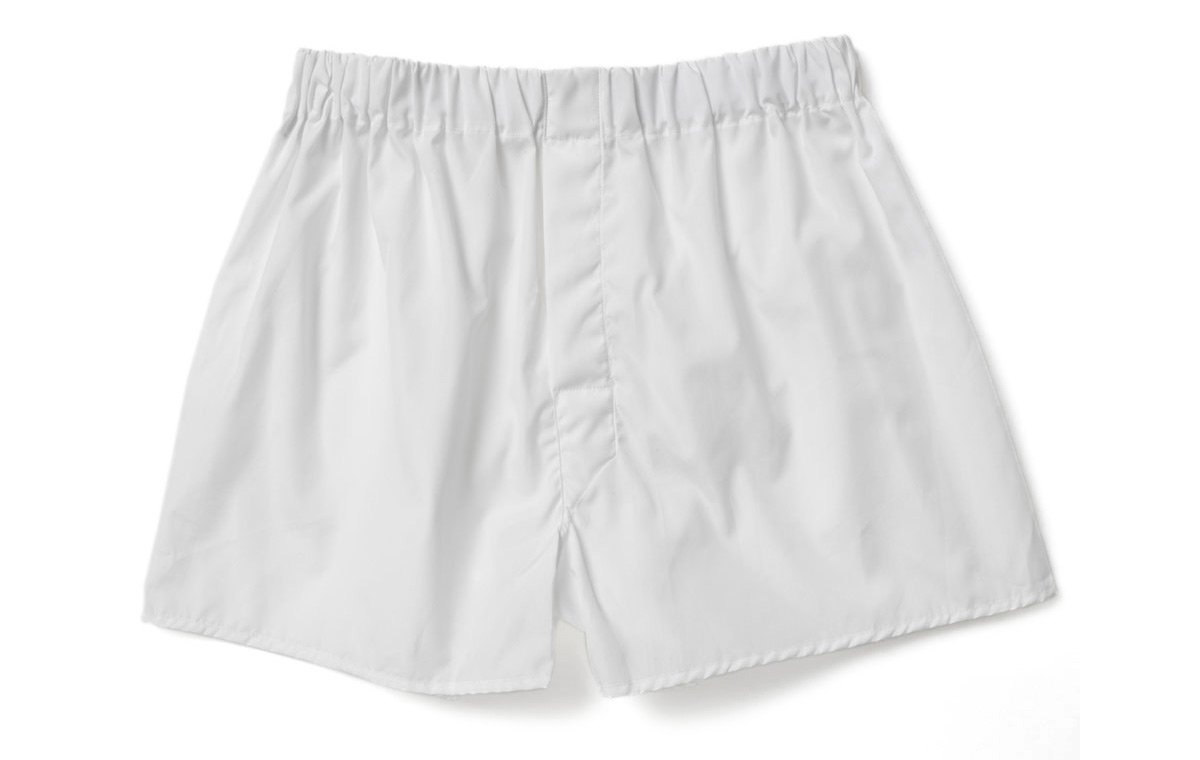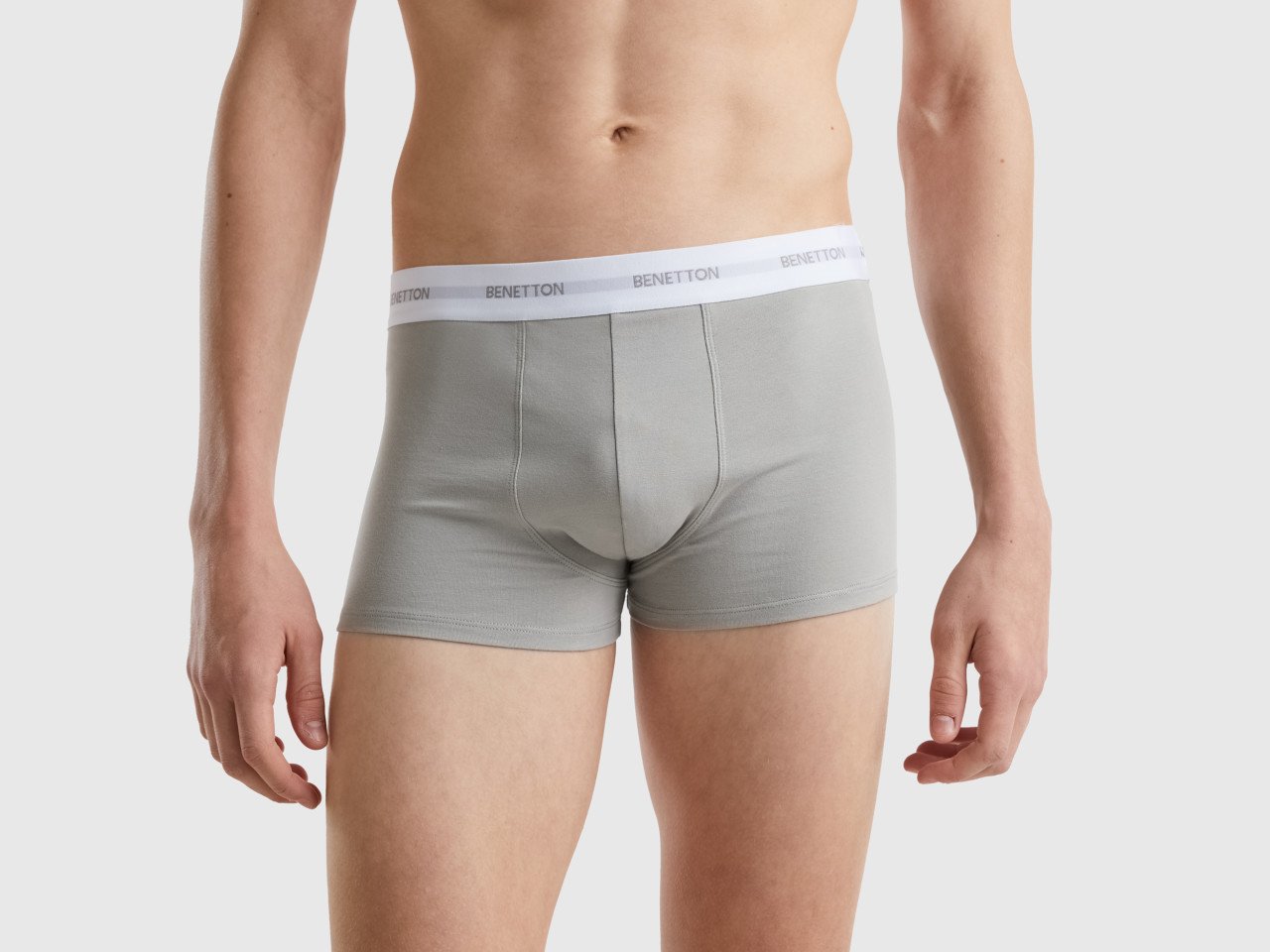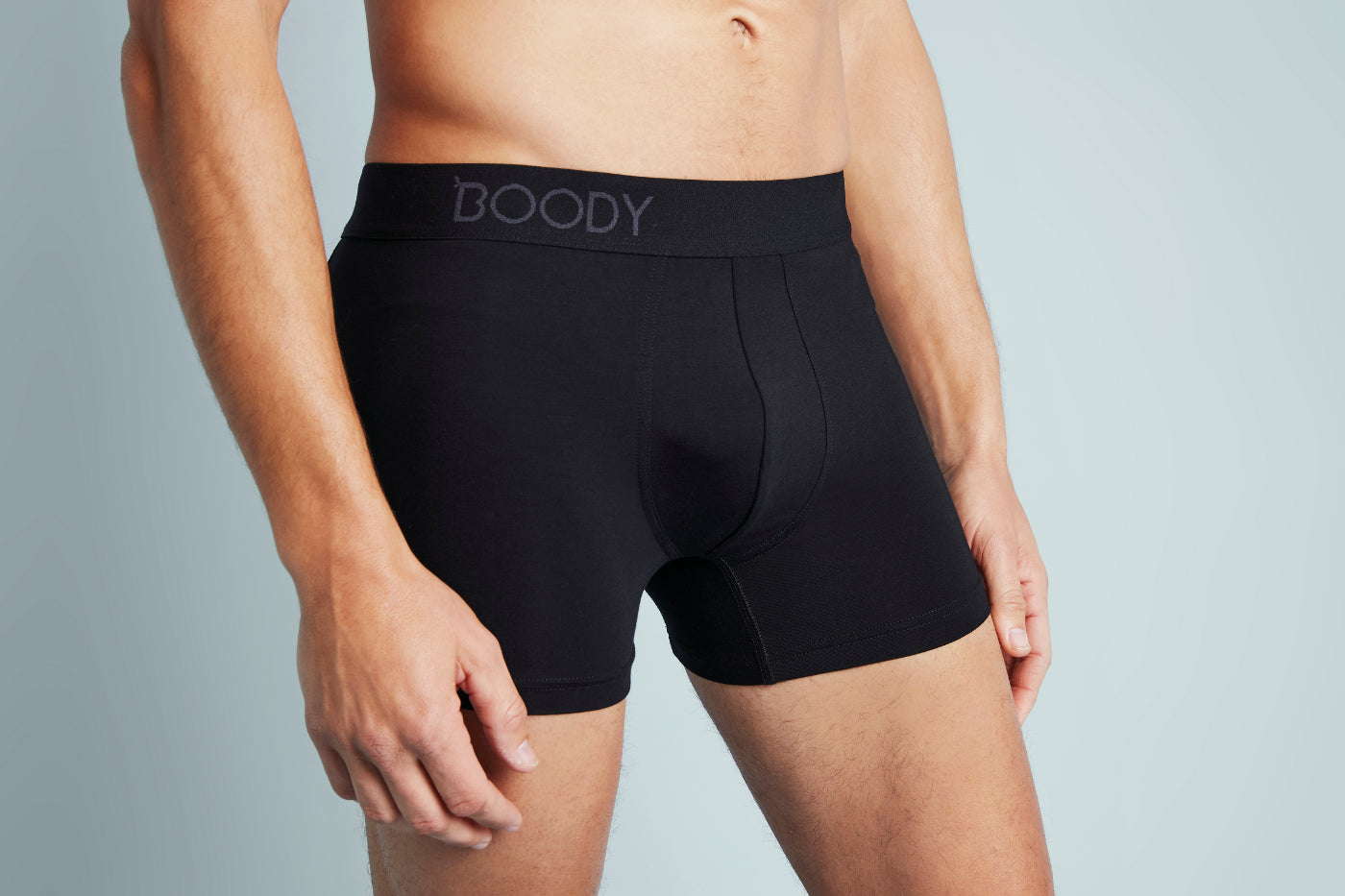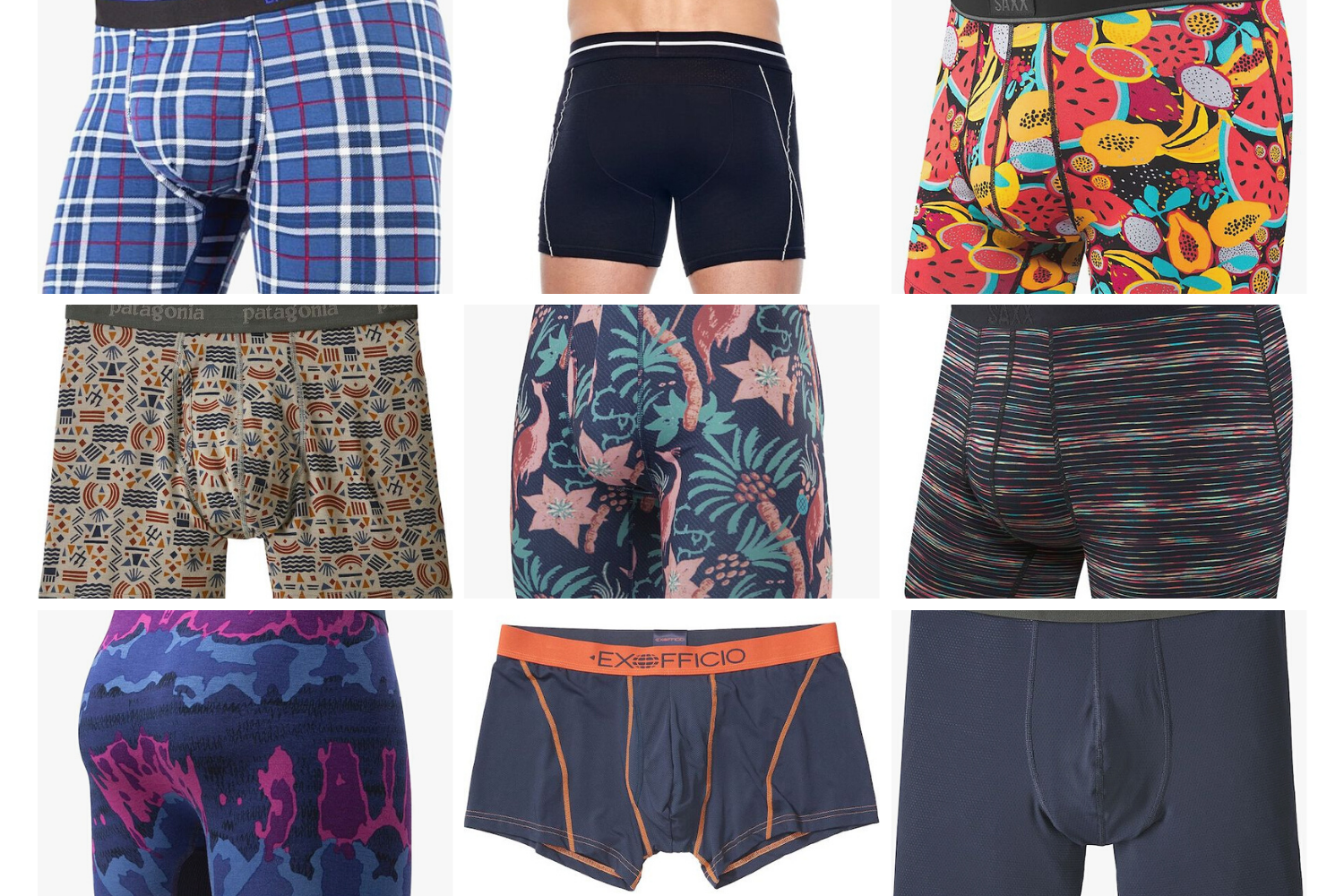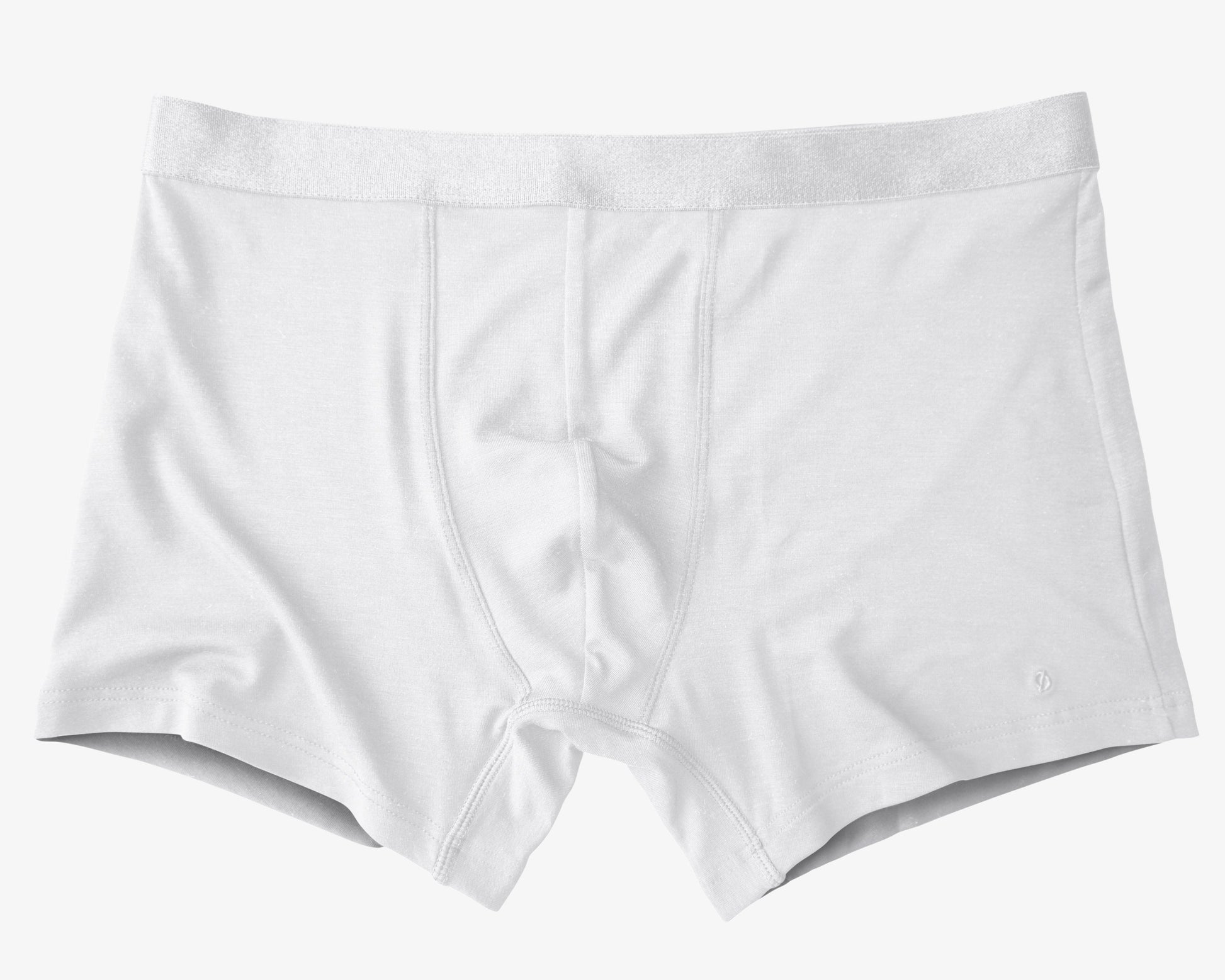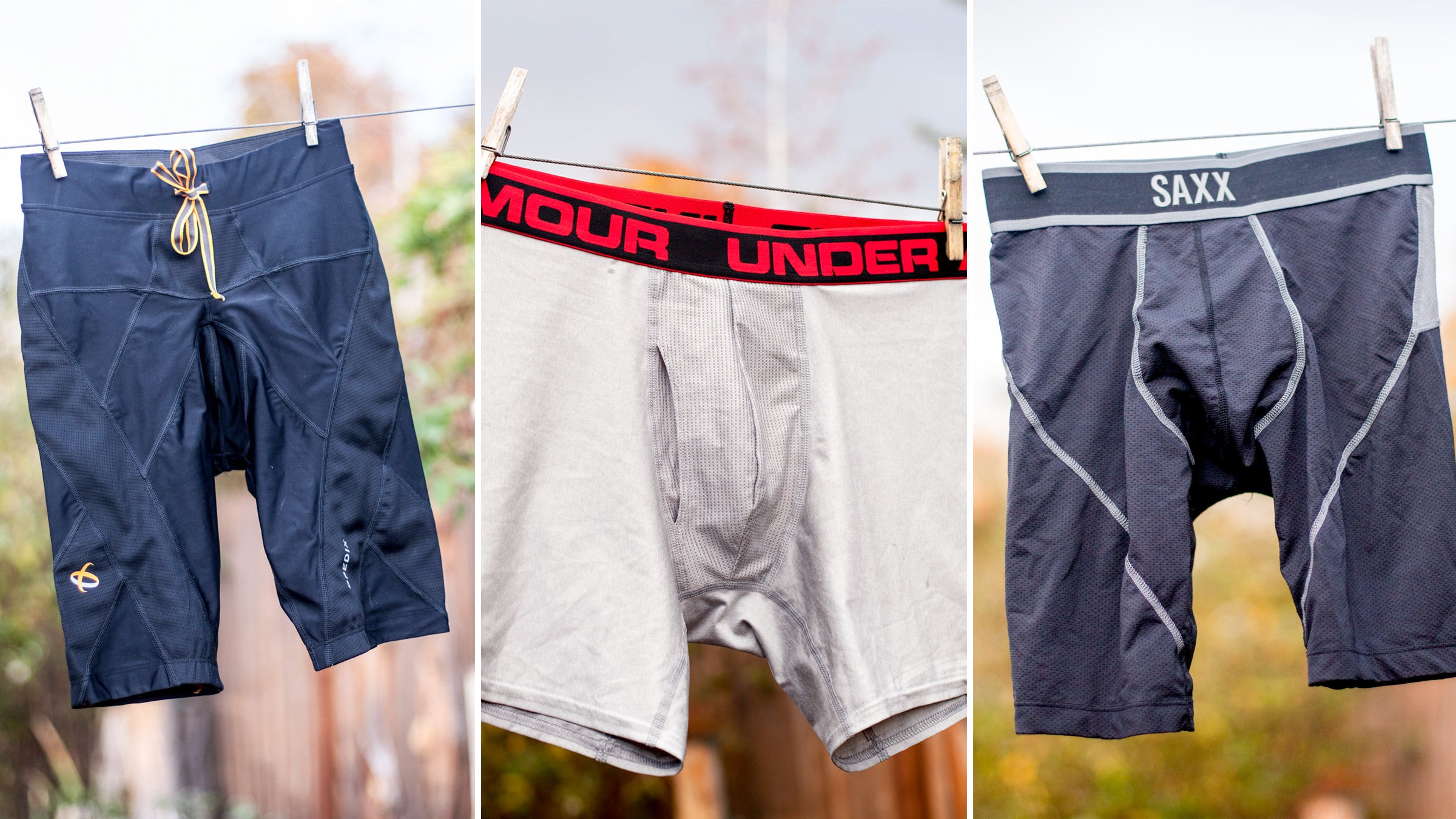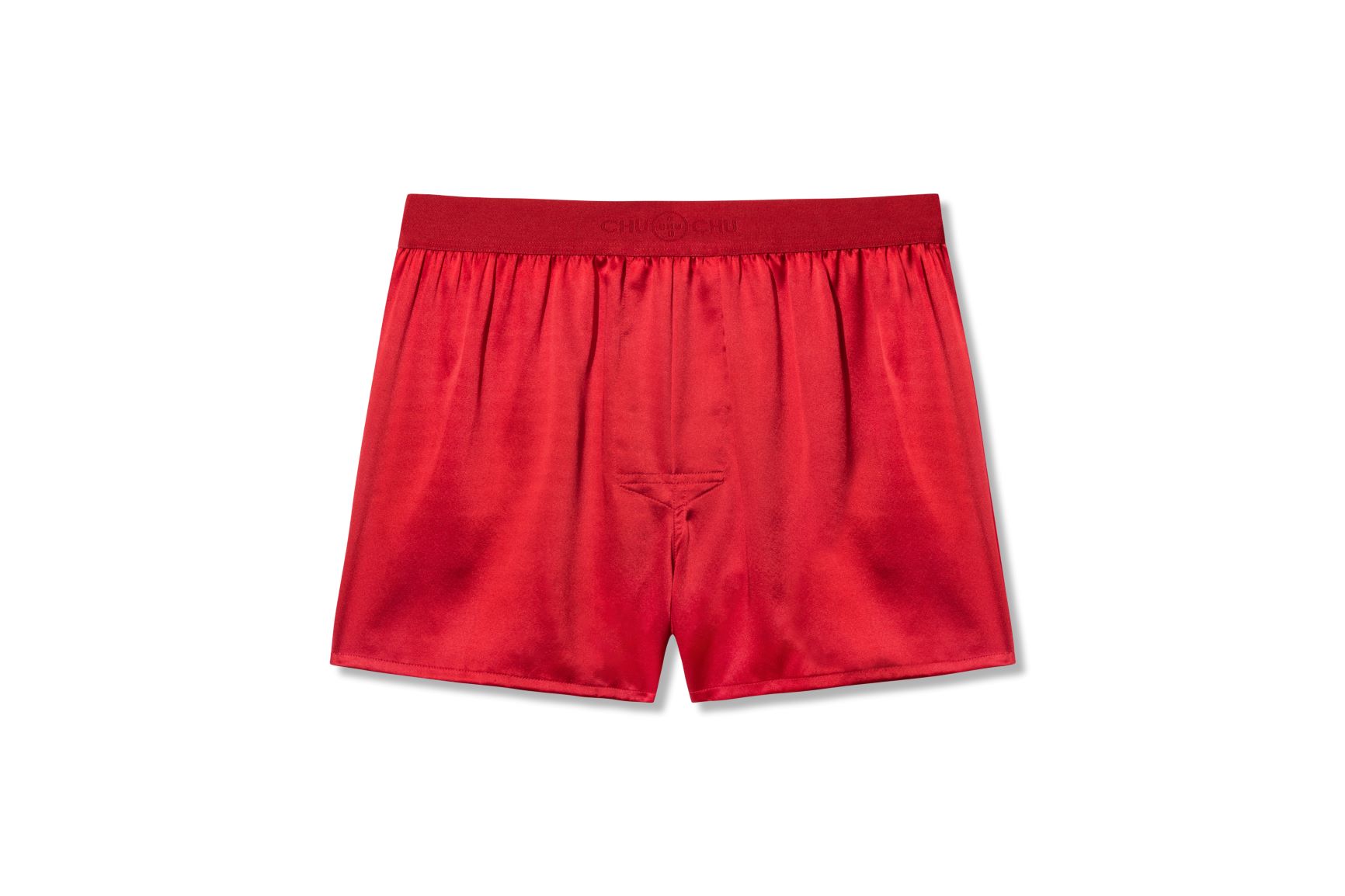Home>Men's Underwear>Boxers>Why Do Doctors Often Advise Men With Low Sperm Counts To Wear Boxer Shorts?


Boxers
Why Do Doctors Often Advise Men With Low Sperm Counts To Wear Boxer Shorts?
Modified: August 2, 2023
Discover why doctors recommend men with low sperm counts to wear boxer shorts and understand how this choice can positively impact fertility.
(Many of the links in this article redirect to a specific reviewed product. Your purchase of these products through affiliate links helps to generate commission for Under-tec.com, at no extra cost. Learn more)
Table of Contents
- Introduction
- Understanding Low Sperm Counts
- Impact of High Testicular Temperature on Sperm Count
- The Role of Underwear in Testicular Temperature
- Boxer Shorts vs. Briefs: The Heat Factor
- Supportive Research and Scientific Studies
- Doctors’ Recommendations: Why Choose Boxers?
- Other Factors to Consider
- Conclusion
Introduction
When it comes to male fertility, one of the key factors that often springs to mind is sperm count. Low sperm count can be a cause of concerns for men who are trying to conceive. Interestingly, doctors have noticed a pattern when it comes to advising men with low sperm counts: wearing boxer shorts. But why exactly do doctors recommend this particular type of underwear?
Before we dive into the specifics, let’s first understand what constitutes a low sperm count. According to the World Health Organization, a sperm count below 15 million per milliliter is considered low. This can significantly reduce the chances of conception and hinder a couple’s efforts to start a family.
It’s important to note that various factors can contribute to low sperm counts. These can range from lifestyle choices, such as smoking or excessive alcohol consumption, to medical conditions such as hormonal imbalances or genetic factors. However, one often-overlooked element that can impact sperm count is testicular temperature.
Yes, you read that right. Testicular temperature plays a crucial role in sperm production and quality. The testicles are located outside the body as a part of the body’s natural mechanism to regulate temperature. This is because sperm production is optimal at a temperature slightly lower than the core body temperature.
Now, you might be wondering, how does underwear affect testicular temperature? The answer lies in the choice of underwear. Boxer shorts, characterized by their loose and breathable design, allow for better air circulation and help keep the testicles cooler. On the other hand, tight-fitting underwear, such as briefs, can trap heat and increase testicular temperature.
It is important to note that this connection between underwear choice and testicular temperature is not a recent discovery. In fact, scientific studies have been conducted to establish the impact of underwear on male fertility. Researchers have found that men who regularly wear boxer shorts have significantly higher sperm counts compared to those who wear briefs.
Based on these findings, doctors often recommend men with low sperm counts to make the switch to boxer shorts. By choosing breathable and loose-fitting underwear, men can potentially create a cooler environment for their testicles, thereby improving sperm production and quality.
While the choice of underwear may not be the sole factor influencing sperm count, it is certainly one that individuals can easily control. It is worth noting that other lifestyle changes, such as maintaining a healthy weight, exercising regularly, and avoiding excessive heat exposure, are also important to optimize fertility.
Now that we have a basic understanding of why doctors often advise men with low sperm counts to wear boxer shorts, let’s explore the scientific evidence and delve deeper into the rationale behind this recommendation.
Understanding Low Sperm Counts
Before we explore the impact of underwear on testicular temperature and sperm count, it is crucial to understand what exactly constitutes a low sperm count and why it is a concern for men trying to conceive.
In the field of reproductive health, a low sperm count, also known as oligospermia, is diagnosed when a man’s semen contains fewer sperm than the normal range. According to the World Health Organization, a sperm count below 15 million per milliliter is considered low.
Why is a low sperm count worrisome? The answer lies in the role sperm plays in conception. When a couple is trying to conceive, the sperm needs to fertilize the female egg. The chances of successful fertilization increase with a higher concentration of sperm in the semen. This means that a low sperm count can significantly reduce the likelihood of conception and may lead to fertility challenges for couples.
There can be various factors contributing to low sperm counts. Lifestyle choices, such as smoking, excessive alcohol consumption, recreational drug use, and poor diet, can all play a role in reducing sperm count and affecting sperm quality. Additionally, medical conditions like hormonal imbalances, infections, genetic factors, and certain medications can also contribute to lower sperm counts.
It is important to note that having a low sperm count does not necessarily mean a man is infertile. Many men with low sperm counts are still able to father children, albeit with reduced fertility. However, taking steps to improve sperm count and overall reproductive health can increase the chances of successful conception.
Evaluating sperm count is typically done through a semen analysis, where a sample of semen is examined under a microscope. This analysis provides information on the number, motility, and overall health of the sperm. If a man’s sperm count falls below the normal range, healthcare professionals may recommend lifestyle changes, medical treatments, or fertility interventions to improve the chances of conception.
Now that we have a clear understanding of what low sperm counts are and why they matter, let’s explore how testicular temperature can impact sperm production and quality, and how the choice of underwear plays into this equation.
Impact of High Testicular Temperature on Sperm Count
Testicular temperature plays a critical role in sperm production and quality. The testicles are located outside the body because sperm production is optimal at a temperature slightly lower than the core body temperature.
When the testicles are exposed to excessive heat, it can have detrimental effects on sperm production and overall fertility. High testicular temperature can impair the maturation process of sperm cells and lead to lower sperm counts, decreased sperm motility, and abnormal sperm morphology.
There are various factors that can contribute to elevated testicular temperature. These include prolonged exposure to hot environments, such as saunas or hot tubs, sitting for long periods with a laptop on the lap, wearing tight clothing, and, of course, the choice of underwear.
It is worth noting that the normal temperature of the human body is approximately 98.6 degrees Fahrenheit (37 degrees Celsius). However, the optimal temperature for sperm production is slightly lower, around 94 to 96 degrees Fahrenheit (34 to 36 degrees Celsius).
When the testicles become exposed to higher temperatures, it can disrupt the delicate balance required for healthy sperm production. Sperm production is a complex process that takes approximately two to three months from start to finish. This means that any disruption in testicular temperature during this period can have long-lasting effects on future sperm quality.
Elevated testicular temperature can lead to a decrease in the number of sperm produced, as well as affect their ability to swim efficiently towards the egg for fertilization. Additionally, high testicular temperature can increase the production of abnormal sperm cells, which further decreases the chances of successful conception.
Therefore, it is essential to be mindful of the factors that can contribute to high testicular temperature and take appropriate steps to minimize exposure. One such step is making the right choice in underwear, which brings us to the debate between boxer shorts and briefs.
In the next section, we will examine the role of underwear in testicular temperature and how opting for boxer shorts over briefs can help create a cooler environment for the testicles, potentially benefiting sperm production and overall fertility.
The Role of Underwear in Testicular Temperature
The choice of underwear can have a significant impact on testicular temperature, which in turn affects sperm production and quality. Understanding how different types of underwear can influence testicular temperature is crucial in making informed decisions regarding fertility and reproductive health.
When it comes to underwear, the two main options that men commonly choose are boxer shorts and briefs. These styles differ in their design and fit, leading to varying effects on testicular temperature.
Briefs, also known as tight-fitting underwear, are characterized by their snug and form-fitting design. The close contact between the fabric and the skin creates a conducive environment for heat retention, which can elevate testicular temperature. The lack of airflow and ventilation in briefs contributes to the accumulation of heat around the testicles, potentially impairing the process of sperm production.
On the other hand, boxer shorts, also referred to as loose-fitting underwear, offer a more breathable and airy environment for the testicles. These shorts provide ample room for the testicles to hang freely, allowing for better air circulation and heat dissipation. This helps maintain a lower and healthier testicular temperature, which can positively impact sperm production and overall fertility.
It is important to note that the impact of underwear on testicular temperature is not simply a matter of personal comfort. Scientific studies have been conducted to explore the potential correlations between underwear choice and testicular heat.
One study published in the journal Human Reproduction found that men who regularly wore briefs had significantly higher scrotal temperatures compared to those who preferred boxer shorts. The study involved measuring scrotal temperatures of 97 men and found that those who wore briefs had scrotal temperatures that were on average 0.7 degrees Celsius higher than those who wore boxer shorts.
As mentioned earlier, even a slight increase in testicular temperature can have a considerable impact on sperm production and quality. Therefore, opting for boxer shorts over briefs may help maintain a cooler environment for the testicles, promoting optimal sperm health and increasing the chances of successful conception.
While the choice of underwear is not the sole factor influencing testicular temperature and fertility, it is a simple and easily modifiable aspect that individuals can control. By making an informed decision regarding underwear style, men can take a proactive step in improving their reproductive health.
In the next section, we will explore the scientific research and studies that support the recommendation of wearing boxer shorts for men with low sperm counts, shedding light on the effectiveness of this advice in enhancing fertility.
Boxer Shorts vs. Briefs: The Heat Factor
The debate between boxer shorts and briefs in relation to testicular temperature and sperm count has been a topic of interest among researchers and healthcare professionals. Let’s delve deeper into the scientific research and studies that shed light on the heat factor associated with these two types of underwear.
As mentioned earlier, briefs, with their tight-fitting design, tend to trap heat and restrict airflow around the testicles. This can lead to an increase in testicular temperature, which has been associated with lower sperm counts and decreased fertility.
A study published in the journal Fertility and Sterility analyzed the impact of underwear choice on semen quality among 656 men. The findings revealed that men who wore briefs had significantly lower sperm counts and lower sperm concentrations compared to those who preferred boxer shorts. This study provides substantial evidence that the heat generated by tight-fitting underwear can indeed have a negative impact on sperm production.
Additionally, research conducted at the Stanford University School of Medicine further supports the idea that testicular heat can affect fertility outcomes. The study involved 500 men who underwent fertility evaluations, including semen analysis. The results showed that men who regularly wore boxer shorts had higher sperm counts and a lower percentage of DNA damage in their sperm compared to those who wore briefs.
While these studies suggest that boxer shorts may be more favorable for maintaining a cooler testicular temperature, it is important to note that individual variations and preferences can come into play. Some men may find briefs more comfortable or may not experience a significant impact on their sperm count due to underwear choice.
Ultimately, the choice between boxer shorts and briefs depends on personal comfort, lifestyle, and individual reproductive health factors. It is advisable to consider the impact of testicular temperature on fertility and make an informed decision based on scientific evidence and guidance from healthcare professionals.
It is worth mentioning that there are other factors beyond underwear choice that can influence testicular temperature and sperm count. Factors such as hot baths, saunas, excessive laptop use on the lap, and exposure to heat in occupational environments should also be taken into consideration when aiming to optimize testicular temperature and enhance fertility.
In the next section, we will explore why doctors often recommend boxer shorts for men with low sperm counts and the overall benefits that can be associated with making this specific underwear choice in efforts to improve reproductive health.
Supportive Research and Scientific Studies
The recommendation of wearing boxer shorts for men with low sperm counts is not simply anecdotal advice; it is backed by supportive research and scientific studies that highlight the positive impact of this underwear choice on reproductive health.
One study published in the journal Human Reproduction sought to examine the association between underwear type and semen quality. The researchers collected semen samples from 656 men and analyzed various parameters, including sperm concentration, motility, and morphology. The study found that those who wore boxer shorts had significantly higher sperm concentrations and total sperm counts compared to those who opted for tight-fitting underwear, such as briefs.
Another study conducted at the Harvard T.H. Chan School of Public Health involved over 600 men who were treated for infertility. The researchers assessed various lifestyle and environmental factors, including underwear choice. The findings revealed that men who reported wearing boxer shorts had significantly higher sperm counts and lower levels of follicle-stimulating hormone (FSH), an indicator of testicular function, compared to those who preferred briefs.
Furthermore, a study published in the journal Fertility and Sterility analyzed the impact of different types of underwear on semen quality among 1,090 men attending a fertility clinic. The researchers found that men who wore boxer shorts had significantly higher sperm concentrations, total sperm counts, and sperm motility compared to those who wore tighter-fitting underwear.
These scientific studies provide consistent evidence that choosing boxer shorts over briefs can positively influence sperm count, concentration, and motility. The loose and breathable design of boxer shorts allows for better air circulation and helps maintain a cooler environment around the testicles. This, in turn, promotes optimal sperm production and improves overall semen quality.
While these studies indicate a clear advantage for boxer shorts in enhancing male fertility, it is important to note that individual variability exists, and other factors can also influence sperm count and quality. Lifestyle choices, such as maintaining a healthy weight, avoiding excessive heat exposure, and practicing good overall reproductive health habits, all play a role in optimizing fertility.
In summary, the supportive research and scientific studies provide strong evidence to support the recommendation of wearing boxer shorts for men with low sperm counts. By choosing this type of underwear, men can create a cooler environment for their testicles, potentially improving sperm production, concentration, and motility. However, it is important to consider individual factors and consult with healthcare professionals for personalized advice and guidance based on specific fertility concerns.
Doctors’ Recommendations: Why Choose Boxers?
Considering the impact of testicular temperature on sperm production and the supportive research on the benefits of wearing boxer shorts, it’s no wonder that doctors often recommend this type of underwear for men with low sperm counts. Here are several reasons why doctors advocate for the choice of boxers:
1. Improved Testicular Temperature Regulation: Boxer shorts, with their loose and breathable design, allow for better airflow and ventilation around the testicles. This helps to regulate testicular temperature, keeping it within the optimal range for healthy sperm production. By maintaining a cooler environment, boxers may help prevent undue heat stress on the testicles and preserve sperm quality.
2. Enhanced Sperm Production: The heat-reducing properties of boxer shorts can contribute to increased sperm production, concentration, and motility. By providing a cooler environment for the testicles, boxer shorts may help support the natural process of spermatogenesis, leading to higher sperm counts and improved fertility outcomes.
3. Minimal Restriction and Improved Blood Circulation: Unlike tight-fitting briefs, boxer shorts offer more freedom of movement for the testicles. This reduced constraint allows for improved blood circulation in the scrotal region, promoting healthy cellular metabolism within the testes. Adequate blood flow ensures the delivery of essential nutrients and oxygen to support optimal sperm development.
4. Comfort and Convenience: Boxer shorts are often considered more comfortable than tight-fitting underwear. The loose fit and relaxed design provide greater ease of movement and reduced friction, which can be particularly beneficial for overall comfort and fertility maintenance.
5. Simple Lifestyle Change: Opting for boxer shorts represents a straightforward and accessible lifestyle change that men can make to potentially improve their sperm count and reproductive health. Unlike other factors that may be more challenging to control, such as genetics or certain medical conditions, adjusting one’s choice of underwear is a practical and achievable step towards optimizing fertility.
While doctors recommend boxer shorts as a potential strategy to address low sperm counts, it is important to remember that individual variations exist. Some men may experience more significant benefits from this change, while others may not see as dramatic of an impact. Consulting with a healthcare professional is crucial for personalized advice and guidance regarding fertility concerns.
Furthermore, it is essential to consider that underwear choice is just one piece of the puzzle when it comes to optimizing fertility. Maintaining a healthy lifestyle, managing stress levels, avoiding excessive heat exposure, and seeking appropriate medical care for underlying conditions are all integral aspects of promoting reproductive health.
In the next section, we will explore other factors that individuals should consider in addition to underwear choice to holistically improve sperm count and overall fertility.
Other Factors to Consider
While the choice of underwear, specifically opting for boxer shorts, can play a role in maintaining optimal testicular temperature and potentially improving sperm count, it is important to recognize that it is just one piece of the puzzle for enhancing fertility. Here are some other factors to consider for overall reproductive health:
1. Lifestyle and Diet: Maintaining a healthy lifestyle is crucial for optimal sperm production. This includes regular exercise, a balanced diet rich in nutrients, maintaining a healthy weight, and avoiding excessive alcohol consumption and smoking. A nourishing diet that includes fruits, vegetables, whole grains, lean proteins, and healthy fats can provide the necessary nutrients for sperm development.
2. Stress Management: High levels of stress can adversely affect reproductive health, including sperm production. Finding ways to manage stress, such as engaging in relaxation techniques like meditation or yoga, getting enough restful sleep, and seeking emotional support, can contribute to overall well-being and fertility.
3. Avoiding Excessive Heat Exposure: In addition to underwear choice, it is important to minimize exposure to excessive heat in other areas of life. This includes avoiding hot baths, saunas, and prolonged exposure to laptops directly on the lap, as they can increase testicular temperature and impact sperm production.
4. Environmental Toxins: Environmental pollutants and toxins can have a negative impact on sperm health. It is important to minimize exposure to chemicals and toxins in the environment, such as pesticides, harmful chemicals in certain workplaces, and excessive exposure to radiation or heavy metals.
5. Regular Sexual Activity: Engaging in regular sexual activity can help maintain a healthy sperm supply. Frequent ejaculation helps flush out older sperm and promotes the production of fresh, motile sperm. However, it is important to note that excessive ejaculation can temporarily reduce sperm count, so finding a balance is crucial.
6. Seeking Medical Advice: If you are concerned about your sperm count or fertility, it is important to consult with a healthcare professional. They can provide personalized advice, conduct further investigations if necessary, and recommend appropriate treatments or interventions to improve fertility outcomes.
Remember, fertility is influenced by a combination of factors, and a holistic approach to reproductive health is essential. While wearing boxer shorts may contribute to maintaining a cooler testicular temperature and optimizing sperm count, it is important to address other lifestyle factors, minimize exposure to harmful substances, manage stress levels, and seek professional guidance for any fertility concerns.
By considering these various aspects and adopting healthy habits, individuals can take proactive steps towards improving their overall fertility and increasing their chances of successful conception.
Conclusion
When it comes to male fertility, the choice of underwear, particularly opting for boxer shorts over tight-fitting briefs, can have a significant impact on testicular temperature, sperm count, and overall reproductive health. The loose and breathable design of boxer shorts allows for better air circulation and heat dissipation around the testicles, creating a cooler environment that promotes optimal sperm production.
Scientific research and studies have consistently shown that men who wear boxer shorts have higher sperm counts, concentrations, and motility compared to those who choose briefs. These findings highlight the importance of testicular temperature regulation and the benefits of making a simple lifestyle change in the form of underwear choice.
However, it is crucial to recognize that underwear choice is just one aspect of promoting fertility and optimizing sperm count. Factors such as maintaining a healthy lifestyle, managing stress levels, avoiding excessive heat exposure, and seeking appropriate medical care for underlying conditions, all contribute to overall reproductive health.
Individual variations also exist, and it is advised to consult with healthcare professionals for personalized advice based on specific fertility concerns. They can provide guidance, conduct further investigations if necessary, and recommend appropriate treatments or interventions to enhance fertility outcomes.
In conclusion, while wearing boxer shorts may help in maintaining a cooler testicular temperature and potentially improving sperm count, it is essential to adopt a holistic approach to reproductive health. By considering lifestyle factors, managing stress, avoiding excessive heat exposure, and seeking appropriate medical guidance, individuals can take proactive steps towards improving their overall fertility and increasing their chances of successful conception.
